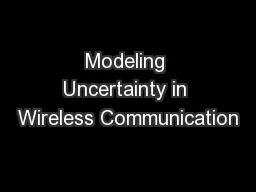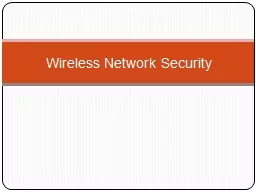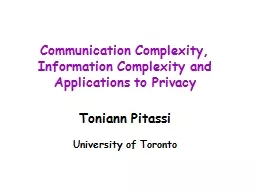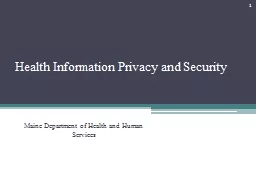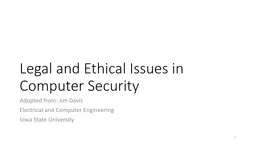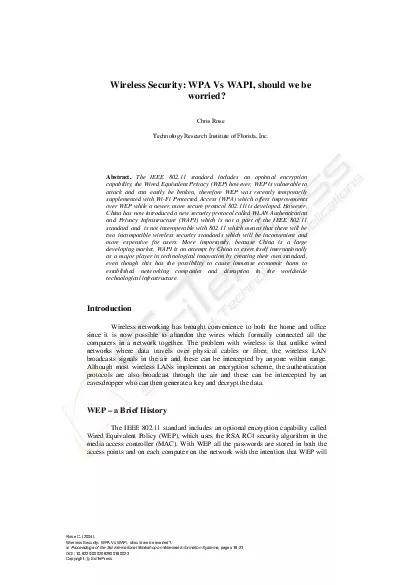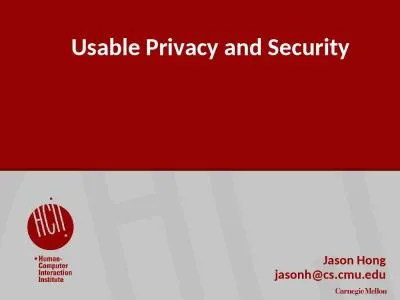PPT-Security and Privacy Issues in Wireless Communication
Author : test | Published Date : 2017-04-01
By Michael Glus MSEE EEL 6788 1 1 Agenda Introduction Challenges Sensor Networks Solutions Presented Path Forward Conclusion 2 Introduction Security and privacy
Presentation Embed Code
Download Presentation
Download Presentation The PPT/PDF document "Security and Privacy Issues in Wireless ..." is the property of its rightful owner. Permission is granted to download and print the materials on this website for personal, non-commercial use only, and to display it on your personal computer provided you do not modify the materials and that you retain all copyright notices contained in the materials. By downloading content from our website, you accept the terms of this agreement.
Security and Privacy Issues in Wireless Communication: Transcript
Download Rules Of Document
"Security and Privacy Issues in Wireless Communication"The content belongs to its owner. You may download and print it for personal use, without modification, and keep all copyright notices. By downloading, you agree to these terms.
Related Documents



